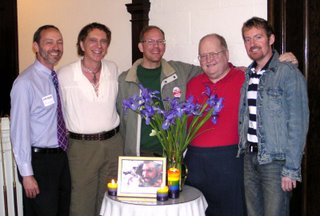. . . to come together to work for the common good.
This was the theme of this year’s annual In the Heart of the Beast Puppet and Mask Theatre’s MayDay celebration in Minneapolis.
Held last Sunday, May 7, the event – featuring a parade, Tree of Life ceremony, and festival – was, as always, an incredibly creative, colorful, and inspiring experience.
Here’s what the organizers said of this year’s theme:
Last spring, the parade asked ‘Where do we go from here?’ This year the May Day community brainstorm meetings tackled the question, ‘What do we want Minneapolis to look like in 50 years?’
The future envisioned at these meetings provides for the Common Good and cultivates the Common Wealth, where each person is an honored and responsible citizen.
We don’t need to wait until we’ve figured it all out. People devastated by Hurrican Katrina – barely able to comprehend, let alone process their loss – immediately picked up tools to salvage their houses, their neighborhoods, their lives. In multitudes, the more fortunate immediately opened their wallets, their homes, and their hearts to help.
The rebuilding, and mourning, continues. The wars, and the terror, continues. National debates on immigration policy and the privatization of natural resources and wilderness areas rage on. In the midst of all this, we say: ‘Let's get started! The time is now!’

Our trumpets purify the air!
Clearing the way for the new,
dissipating narrow, outmoded ways
of being and seeing our world!
Our trumpets summon angels and ancestors!
Awakening the slumbering dreamer,
singer and doer deep within all of us!
Our trumpets are a call to action
to open our eyes and our hearts
and begin the real work.














.JPG)

























